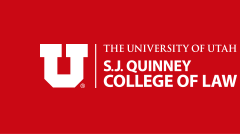Author ORCID Identifier
Document Type
Article
Publication Date
9-2021
Abstract
The coronavirus pandemic has tragically highlighted the vast and long standing inequities facing Tribal communities, including disparities in water access. According to the Centers for Disease Control and Prevention (CDC), American Indians and Alaska Natives (AI/AN) are at least 3.5 times more likely than white persons to contract COVID-19. Limited access to running water is one of the main factors contributing to this elevated rate of incidence.
This report describes current conditions among Tribes in the Colorado River Basin. It outlines the four main challenges in drinking water access: (1) Native American households are more likely to lack piped water services than any other racial group; (2) Inadequate water quality is pervasive in Indian country; (3) Existing water infrastructure is deteriorating or inadequate; and (4) Operation and maintenance of water systems is a critical component of ensuring long-term water security.
The report also examines existing federal assistance programs to provide drinking water access to Tribes. In exchange for the cession of millions of acres of lands, Tribes received certain promises from the federal government. These promises often included the establishment of a reservation as a permanent homeland for Tribes. Based upon an underlying trust responsibility, the federal government has a duty to protect Tribal treaty rights, lands, assets, and resources. Access to a clean, reliable supply of water is basic to human health and clearly a necessary component to providing a habitable and permanent homeland. In at least partial recognition and fulfillment of its treaty and trust responsibility to provide access to clean water for Tribes, various federal agencies have established programs that provide support for water related projects. However, these programs are often underfunded and have other limitations. As a result, obtaining significant progress in providing universal access to clean water for all Americans has remained elusive.
Finally, the report concludes with policy recommendations to address Tribal community water needs. Key recommendations include adopting a whole of government approach and fully funding federal programs related to Tribal drinking water projects. A window of opportunity has opened to address water insecurity in Indian country. It is critical that action be taken before that window closes and these issues are ignored for several more generations.
Recommended Citation
Tanana, Heather; Garcia, Jaime; Olaya, Ana; Colwyn, Chelsea; Larsen, Hanna; Williams, Ryan; and King, Jonathan, "Universal Access to Clean Water for Tribes in the Colorado River Basin" (2021). Utah Law Faculty Scholarship. 330.
https://dc.law.utah.edu/scholarship/330
Included in
Environmental Law Commons, Health Law and Policy Commons, Indigenous, Indian, and Aboriginal Law Commons, Natural Resources Law Commons

